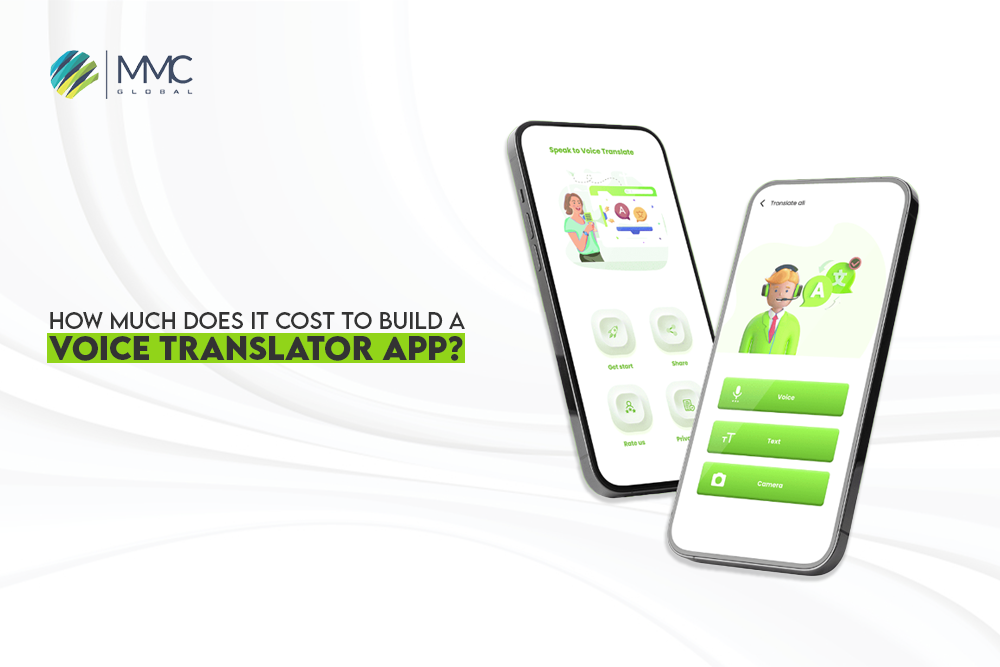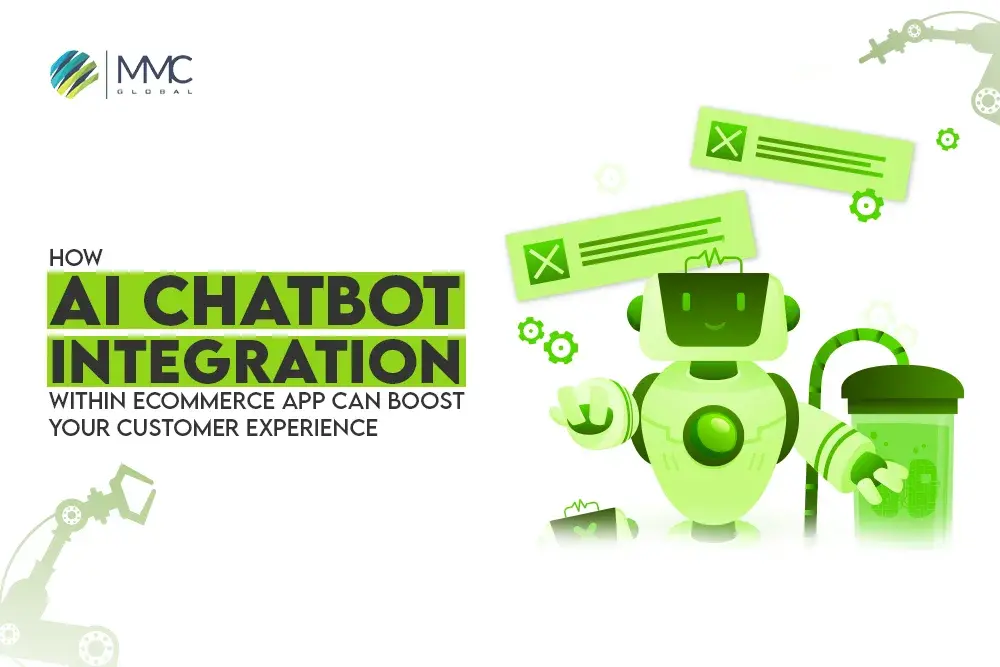AI in Healthcare: 10 Breathtaking AI discovery In Medical Overhaul
The transformation of AI in healthcare is incredible, and it looks like the future of AI is promising since the provision of AI-based tools and solutions is taking over the healthcare industry. In other industries, artificial intelligence development provides opportunities to manage operations, make the right decision at the right time, help with predictive analysis, automate communications, and much more.
AI technology has a wide range of services you can use to run your business. Surprisingly, AI technology is versatile and allows SMBs and large enterprises to harness its amazing advantages.
Similarly, the innovation of AI in healthcare is not surprising. Anyhow, people are unaware of in-depth AI transformation in the medical field, but the reality is different. In this reading, you will discover the robust AI technology in the healthcare sector and what innovations came into the market that doctors and patients leverage.
Reading more: 5 Outstanding AI Mobile Apps For iOS And Android Platforms
What is AI & What is the use of AI in healthcare?
AI or artificial intelligence is the algorithm-based technology that originated based on human intelligence. To make it compatible with human intelligence, complex algorithms are used. There are many other subcategories within AI, including machine learning, deep learning, big data, natural language processing, robotics, etc.
Moreover, medical institutes fully incorporated all categories of AI in healthcare gadgets and tools. It means using machine learning, robotics, automated communication, research, and data analysis is normal and frequently used in equipment.
After deploying AI technologies, some healthcare firms have claimed to have noticed significant changes. However, the med-tech industry is fully ready to harness AI in healthcare for the next big plan of action.
To sum up, artificial intelligence (AI) is the functionality of computers and other technologies to mimic human cognition and to learn, decide, and act. Therefore, AI in healthcare refers to using computers to analyze and take action on medical data, sometimes to foresee the outcome.
At MMCGBL, we work closely with AI projects, and we have completed more than 800 projects by using futuristic technology. See our successful projects to measure our success rate.
Subcategories of AI Used in the Healthcare Startups
Many sub-categories of AI can be used in building AI-based mobile applications as required. We are all conscious that the use of AI in healthcare is still very new. That is why few of the most used sub-categories only come to the ground, but AI has a long way to go in healthcare, so we do not assume that the below sub-categories are the end of AI in healthcare. Have a look into it!
Machine Learning
Machine learning Trend is one of the widely used AI technologies to take care of statistical data models. ML is nothing more than a statistical approach that improves model fit to data to extract useful insights from the data.
You need to know if we are explicitly discussing machine learning in the healthcare sector. Healthcare startups benefit most from machine learning’s accuracy in diagnosing illnesses, prescribing medications, and planning medical procedures based on a patient’s characteristics and medical history.
But in order to get the desired results, machine learning and its use in personalized medicine require training datasets; this method is known as supervised learning.
Deep learning-based artificial intelligence in healthcare also employs voice recognition via natural language processing (NLP). Deep learning algorithms often include few features that have significance to human observers, making it difficult to evaluate the model’s output.
Natural Learning Processing
The idea of natural language processing, or NLP, is beneficial for a multitude of functions, including text translation, language understanding, and speech recognition.
Two methods are used for the process: statistical NLP and semantic NLP. However, it is usually applied because statistical NLP is based on deep learning neural networks and machine learning, which are quite accurate at text recognition and language recognition.
To maximize the use of these insights, the generation, understanding, and classification of texts are among the core NLP activities. In addition, NLP serves as an analytical tool for unstructured patient data. In order to perform conversational AI, it automatically creates reports on patients’ diagnoses and records their communications.
Robotics Process Automation
In reality, robotic process automation has minimal to do with robots. They are server-based computer applications that employ automation technologies and are able to learn, simulate, and display rule-based business processes.
RPA is very small compared to other artificial intelligence systems. It is also simple to build and monitor because it lacks a clear user interface.
Companies in the healthcare industry may use AI for routine operations like prior permission, invoicing, and amending patient information and records. The same technology may be used with other technologies, such as image recognition, to extract data from faxed photographs and feed it into operational systems.
Physical Robots
Recently, the health industry introduced robotic staplers that help surgeons to make careful sutures. The most satisfactory surgical stapler outcomes are it minimizes damage, preserves proper blood flow, and provides minimum tissue incision and leak-free sutures.
As their name implies, industrial robots are designed to carry out certain activities, such as serving in restaurants, repositioning, uplifting, welding, assembling products, etc.
Robots have become more proficient at pacing as the years go by. You might be astonished to learn that over 200,000 industrial robots are placed worldwide every year. They are built and designed in such a manner that training them to move or transition to another function does not need a lot of work.
Regarding physical robots in healthcare AI, we have observed robots functioning effectively, as I mentioned above, as robotic staplers. They work together with people humanely and sometimes without human intervention.
Rule-Based Expert System
In AI, expert systems have been around for decades. Since a few decades ago, they have mostly been used in “clinical decision support” applications in the field of AI healthcare, with healthcare entrepreneurs now making the best use of them. Numerous electronic health record (EHR) providers currently provide a set of regulations with their systems.
These expert systems need the assistance of human specialists in order to include a set of regulations about a certain knowledge domain. When there are many rules, the work gets more difficult since the rules often clash and finally fall out of harmony. Thus, machine learning algorithms are rapidly replacing this sort of AI.
What are the 7 Real-Life Examples of AI in Healthcare?
Let’s have a look at what AI has brewed for the healthcare industry.
AI in Drug and Diagnoses
AI plays a vital role in disease diagnosis and drug discovery with the help of machine learning and deep learning. Doctors leverage AI in the detection of minor or major diseases such as Alzheimer, cancer, diabetes, chronic heart disease, tuberculosis, stroke and cerebrovascular, hypertension, skin, and liver disease. On the other hand, many pharmaceutical companies start making medicines after studying patients’ critical data without AI assistance.
AI Optimizing Radiology Imaging Techniques
AI is more promising for optimizing different imaging techniques such as machine magnetic resonance imaging (MRI), Computed tomography (CT), X-ray, robotic staplers, etc. The main branches of radiology and medical AI imaging techniques are minimizing its harmful effect and optimizing organ images. AI provides computational power and authority for faster and more accurate image representation and for identifying complicated patterns in analyzing a patient’s condition. However, because AI algorithms can continuously adapt to medical imaging, the old way of assessing and adopting software changes is becoming obsolete.
Predict Immune System With IMAGE
Do you realize that age is the primary factor determining your immunological capacity? And once more, AI technology is at the forefront of this. Now with AI, you can:
- Evaluate the immunological system in your body
- Be fully aware of how weak you’ll be in a short while, and
- Awareness of your body’s capacity for accepting change.
One of the innovations of AI in healthcare is the IMAGE or AI aging clock, which helps to predict a person’s immune system. It enables you to determine your immune system’s specific strength and anticipate its strength and weakness. Additionally, it alerts you to a possible future cardiac issue that is not yet noticeable.
Lung Cancer Detection With AI Blood Testing
The Johns Hopkins Kimmel Cancer Center team reported that a clinical trial with or without lung cancer patients occurred. The AI blood testing found more than 90% of lung cancers out of 800 specimens of individuals. It is a successive trial, and now lung cancer is easily detectable with this invention. The process of AI blood testing is complex, but it has a whole process that needs to understand who is dealing with the AI-based blood-tasting process.
Cloud Data Storage With AI in Healthcare
Both organized and unstructured healthcare data are quite valuable. The correct patient data from various sources may be gathered and calculated in the cloud. Medical research can be enhanced by using Big Data technology and artificial intelligence algorithms to cloud-based patient data.
The increased cloud computing capacity makes it easier to investigate enormous amounts of data. Additionally, it ensures that all relevant patient data is recorded and that no medication orders are overlooked. Cloud-based data analysis is excellent for gathering important patient data.
Wearable Devices and Apps
Wearable technology is the most promising technology of AI in the healthcare world. Imagine your doctor can now detect your heartbeat without being present in front of you. Wearables are the best devices for patients who have to monitor frequently.
Moreover, the wearable can help you to detect early disease diagnosis, track your sugar level, monitor your heart beat rate, and much more. Many wearable development companies support customized wearable devices and provide a wearable application to track your physical health.
Bioprinting With AI
A cutting-edge technique known as additive manufacturing, or creating three-dimensional solid items from a computer file, includes 3D printing. The printing process resembles layering in that successive layers are added until the product is complete.
The idea of creating new organs is fairly enormous: therefore, this is astonishing. Even so, 3D-printed organs are rather realistic in appearance. It is still in the development stage; the technology has already entered clinical testing but is still in the pipeline to provide flawless development. Body components tested in clinical settings for 3D bioprinting include bones, skin, ears, and corneas.
Read more: 3 Ways Companies Can Start Implementing AI
In any case, 3D bioprinting and creating new organs are similar. Making a computerized model of the tissue is the first step. This procedure needs attention to monitor the matrix structure and resolution. It’s because bio-ink, made of live cells, is employed as the primary component in the printing process.
Smart Pills or Pills with Sensor
The swallowable sensor in the Abilify MyCite (aripiprazole tablets with sensor) tracked when the drug was consumed. The medication is authorized for the acute treatment of manic and mixed episodes linked to bipolar I disorder as well as for use as adjunctive therapy for adult depression.
The wearable patch receives a notification from the sensor in the pill, which is how the device operates. Patients can monitor their drug intake on their Smartphones by using a mobile application that receives information from the patch. Patients may also authorize their carers and doctors to view the data through a web-based interface.
Ending Note
There is a long way to go with AI in healthcare, but if you want to build AI-based technology, it is high time to market your product. Healthcare needs the inclusion of technology to serve better to your patients. Early diagnosis, the latest imaging techniques, tumor detection, secure patients database, etc., can help doctors and patients to increase their chances of survival.
If you are looking for an industry that helps you to integrate your device with AI technology, you are at the right place. We have handled complex projects based on AI technology and successfully completed them for our clients. Our work process of completing projects is so smooth, and we always keep our clients in the loop so that they know the progress of their projects. Let’s get in touch with us and start your new project of AI that helps healthcare institutions.
FAQs For AI in Healthcare
Do practitioners and scientists satisfy AI in healthcare?
Overall, findings show that AI in healthcare is reliable. After performing several polls and studies, researchers discovered that people had a favorable attitude toward AI in healthcare.
What AI in healthcare is worth using?
The Healthcare industry seeks transformation with technology because they observe the various advantages of artificial intelligence, such as:
- Real-time diagnosis
- Smart pills for better recovery
- Virtual Consultation
- Secure patients’ health records
- Triggered instant unconsciousness
May I launch fitness apps for my audience?
Yes, you can. Building a fitness app is not a big deal for us. Let’s connect with us; we will let you know the ideas and features that make your app more striking.



